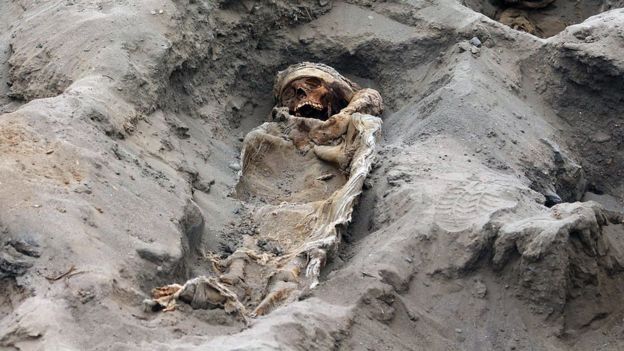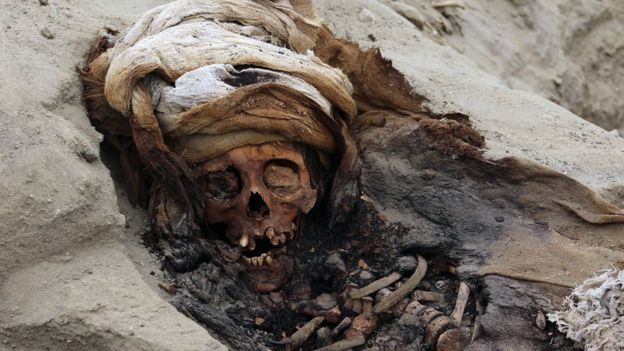Mass Child Sacrifice Discovered in Peru May Be World’s Largest
In Peru ‘s coastal plain, archeologists who excavated what is believed to be the world’s largest children’s sacrifice site have extracted the skeletons of 227 young victims.
Ever since last year teams have been digging at the sacrificial site of Huanchaco, a tourist town on the beach near Trujillo, the third-largest city in Peru.
The children aged four and 14 years of age have been sacrificed by experts to the Chimú culture in order to displace the gods as the rains and floods caused by the weather pattern of El Niño have reached the coast of Peru.

“This is the biggest site where the remains of sacrificed children have been found,” chief archaeologist Feren Castillo told to AFP. “There isn’t another like it anywhere else in the world.”
He said the children had been sacrificed to appease the El Niño phenomenon and showed signs of being killed during wet weather.
Castillo, an archaeologist at the National University of Trujillo, said that there may still be more to be found. “It’s uncontrollable, this thing with the children. Wherever you dig, there’s another one,” he added.
The children’s remains were found in a position facing the sea. Some still had skin and hair and had been found with silver earrings.
Huanchaco was a site where many child sacrifices took place during the time of the Chimú culture, whose apogee was between 1200 and 1400.
Archaeologists first found children’s bodies at the dig site in the town’s Pampa la Cruz neighborhood in June 2019, unearthing 56 skeletons.
Pampa la Cruz is a short distance from Huanchaquito, where the remains of 140 sacrificed children and 200 llamas were found in April 2019.

Excavation work at Huanchaquito started in 2011, but the findings were first published last year by National Geographic, which helped finance the investigation.
Researchers there found footprints that had survived rain and erosion. The small footprints indicate the children were marched to their deaths from Chan Chan, a huge, ancient adobe city a mile from the burial site.
The children’s skeletons contained lesions on their breastbones, which were probably made by a ceremonial knife. Dislocated ribcages suggest whoever was performing the sacrifices may have been trying to extract the children’s hearts.
The Chimú civilization extended along the Peruvian coast to Ecuador but disappeared in 1475 after it was conquered by the Inca empire, which in turn fell to the Spanish conquistadors.
The region still suffers the devastating effects of El Niño. In March 2017, 67 people were killed and thousands more forced to evacuate by intense rains which damaged 115,000 homes and destroyed more than 100 bridges in Peru.
In 1998, a “super” El Niño hit Peru, killing more than 300 people and causing billions of dollars of damage.





